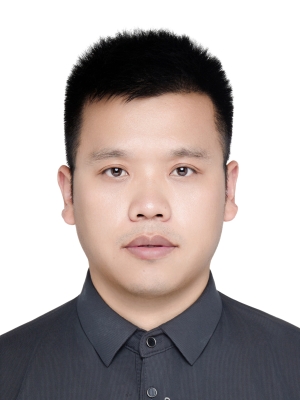工作单位:海洋工程与技术学院
专业资格:副教授、硕士生导师
电子邮箱:liutao55@mail.sysu.edu.cn
研究方向:水声信息感知与目标探测技术
招生专业:船舶与海洋工程、电子信息。课题组科研经费充足、科研设施完善,欢迎船舶与海洋工程、机械电子、自动化等相关专业的同学保送及报考!
一、个人详细信息介绍:
刘涛,男,中共党员,博士,副教授,硕士生导师。目前主要从事机器人总体设计与智能控制技术、水声信息感知与目标探测技术研究,包括机器人总体设计与分析、水下航行器智能控制、机电一体化、水下感知与目标探测技术等。近年主持国防重点实验室项目、国家重点研发计划项目子课题、广东省面上等多个项目的研究工作;以第一作者/通讯作者在机器人设计与控制领域发表论文20余篇,长期担任Ocean Engineering、Nonlinear Dynamics、Mechanism and Machine Theory等高水平期刊审稿人。指导学生多次参加学科竞赛活动并获奖,指导学生获国家奖学金、优秀毕业论文等荣誉。欢迎对水下机器人创新设计、智能控制、强化学习等方向感兴趣的同学交流、报考。
教育经历:
2016.03-2021.12:西北工业大学航海学院,兵器科学与技术,工学博士;
2013.09-2016.03:西北工业大学航海学院,船舶与海洋结构物设计制造,工学硕士;
2009.09-2013.06:西北工业大学航海学院,机械设计制造及其自动化,工学学士。
工作经历:
2025.04—至 今:中山大学海洋工程与技术学院,副教授;
2021.12—2025.03:中山大学海洋工程与技术学院,助理教授。
社会兼职:
汉江国家实验室—珠海研究中心团队 核心成员
南方海洋科学与工程广东省实验室(珠海)创新团队 核心成员
任课情况:
1.本科教学
《工程制图与CAD》
《大学物理实验》
2.研究生课程
《海洋机器人智能控制理论及应用》
二、科研项目
[1] 2024.10-2026.10,声呐技术国防重点实验室基金项目,基于AUV拖曳阵的深海直达声区目标探测方法研究,主持;
[2] 2023.12-2026.11, 国家重点研发计划子课题,深拖安全预警保障软件开发,主持;
[3] 2025.01-2027.12,广东省自然科学基金面上项目,海水磨蚀作用下水下航行器动力学建模与智能控制策略研究,主持;
[4] 2023.3-2023.08,国防横向项目,某航空组网软件开发,主持;
[5] 2024.03-2025.03,青年教师培育项目,面向水下航行器高机动航行的离-在线混合强化学习研究,主持。
三、近期发表论文
[1] Liu T*, Zhao J, Huang J, et al. A hybrid RVO-MPPI approach for efficient collision avoidance for multiple autonomous underwater vehicles[J]. Ocean Engineering, 2024, 312: 119205.
[2] Liu T*, Zhao J, Huang J, et al. Research on model predictive control of autonomous underwater vehicle based on physics informed neural network modeling[J]. Ocean Engineering, 2024, 304: 117844.
[3] Liu T*, Zhao J, Huang J, et al. Research on model predictive control of autonomous underwater vehicle based on physics informed neural network modeling[J]. Ocean Engineering, 2024, 304: 117844.
[4] Liu T*, Zhao J, Hu Y, et al. Trajectory tracking control of vectored thruster autonomous underwater vehicles based on deep reinforcement learning[J]. Ships and Offshore Structures, 2024: 1-14.
[5] Liu T*, Zhao J, Huang J. A Gaussian-Process-Based Model Predictive Control Approach for Trajectory Tracking and Obstacle Avoidance in Autonomous Underwater Vehicles[J]. Journal of Marine Science and Engineering, 2024, 12(4): 676.
[6] Liu T*, Huang J, Zhao J. Research on obstacle avoidance of underactuated autonomous underwater vehicle based on offline reinforcement learning[J]. Robotica, 2024: 1-25.
[7] Zhao J, Liu T*, Huang J. Hybrid offline-online reinforcement learning for obstacle avoidance in autonomous underwater vehicles[J]. Ships and Offshore Structures, 2024: 1-16.
[8] Liu T, Hu Y, Xu H, et al. A novel vectored thruster based on 3-RPS parallel manipulator for autonomous underwater vehicles[J]. Mechanism and Machine Theory, 2019, 133: 646-672.
[9] Liu T, Hu Y, Xu H, et al. Investigation of the vectored thruster AUVs based on 3SPS-S parallel manipulator[J]. Applied Ocean Research, 2019, 85: 151-161.
[10] Liu T, Hu Y, Xu H. Deep reinforcement learning for vectored thruster autonomous underwater vehicle control[J]. Complexity, 2021, 2021: 1-25.
[11] Liu T, Hu Y, Xu H, et al. Investigation of an Underwater Vectored Thruster Based on 3RPS Parallel Manipulator[J]. Mathematical Problems in Engineering, 2020, 2020: 1-18.
[12] Liu T*, Huang J, Zhao J. Autonomous Underwater Vehicle Trajectory Tracking Based on Physics Informed Neural Network Modeling[C]//2024 3rd International Conference on Innovations and Development of Information Technologies and Robotics (IDITR). IEEE, 2024: 7-12.
[13] Liu T*, Huang J, Zhao J. Research on Control Problems of vectored thruster AUVs with deep reinforcement learning[C]//2024 3rd International Conference on Innovations and Development of Information Technologies and Robotics (IDITR). IEEE, 2024: 1-6.
[14] Liu T*, Wang Z, Li F, et al. Research on a vectored thruster based on 3RRUR for micro AUVs[C]//OCEANS 2022, Hampton Roads. IEEE, 2022: 1-7.
[15] Liu T*, Zhao J. Research on 3D Obstacle Avoidance of Autonomous Underwater Vehicle Based on Deep Reinforcement Learning[C]//International Conference on Autonomous Unmanned Systems. Singapore: Springer Nature Singapore, 2023: 397-404.




